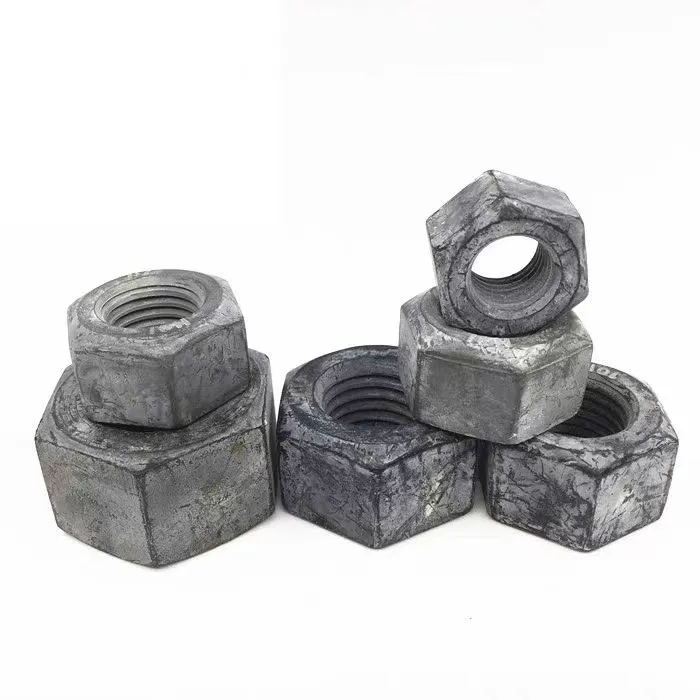

types of bolts
Feb . 17, 2025 17:25 Back to list
types of bolts
The world of fasteners is an intricate one, where the selection of the right type can significantly affect the safety and durability of construction projects, machinery, and even household items. Bolts, a kind of fastener commonly used for joining materials together, come in a wide array of types, each with its own unique features and benefits. Understanding these differences is crucial for both professionals and DIY enthusiasts.
The tension control bolt is another innovation designed for more contemporary construction methods. This type includes a built-in tension control mechanism that allows them to be torqued to precise standards without requiring manual inspection. These bolts have gained popularity in steel frame construction, providing peace of mind with their consistent performance and reliability. In scenarios where alignment is crucial and aesthetic appeal matters, the eye bolt serves dual functions — not only securing materials but also providing an anchor point for ropes or cables. Often used in rigging, eye bolts can be found in various settings from construction sites to theatrical productions. These diverse bolt types underscore the evolution of fastening technology, shaped by industry demands and engineering advancements. Selecting the right bolt involves considering not only the material and structural requirements but also the environmental conditions, such as exposure to moisture or chemicals which might necessitate corrosion-resistant coatings like galvanized or stainless steel finishes. Manufacturers play a critical role in this ecosystem, continuously researching and developing new alloys and designs to meet the rigorous standards of modern engineering. Users, in turn, must stay informed about these developments, ensuring that their projects employ the best tools available to achieve safety, durability, and efficiency. Professionals across the field agree that the strategic use of bolts significantly contributes to the integrity of structures and devices. With innovations continuing to unfold, the future promises even more sophisticated fastening solutions, enhancing our capability to build, repair, and innovate safely. In an era where precision and accountability are paramount, expertise in bolts and their applications will remain a valuable asset. Whether you are securing a simple garden shed or constructing a skyscraper, understanding the nuances of bolt selection is as crucial as the tools you use to tighten them.


The tension control bolt is another innovation designed for more contemporary construction methods. This type includes a built-in tension control mechanism that allows them to be torqued to precise standards without requiring manual inspection. These bolts have gained popularity in steel frame construction, providing peace of mind with their consistent performance and reliability. In scenarios where alignment is crucial and aesthetic appeal matters, the eye bolt serves dual functions — not only securing materials but also providing an anchor point for ropes or cables. Often used in rigging, eye bolts can be found in various settings from construction sites to theatrical productions. These diverse bolt types underscore the evolution of fastening technology, shaped by industry demands and engineering advancements. Selecting the right bolt involves considering not only the material and structural requirements but also the environmental conditions, such as exposure to moisture or chemicals which might necessitate corrosion-resistant coatings like galvanized or stainless steel finishes. Manufacturers play a critical role in this ecosystem, continuously researching and developing new alloys and designs to meet the rigorous standards of modern engineering. Users, in turn, must stay informed about these developments, ensuring that their projects employ the best tools available to achieve safety, durability, and efficiency. Professionals across the field agree that the strategic use of bolts significantly contributes to the integrity of structures and devices. With innovations continuing to unfold, the future promises even more sophisticated fastening solutions, enhancing our capability to build, repair, and innovate safely. In an era where precision and accountability are paramount, expertise in bolts and their applications will remain a valuable asset. Whether you are securing a simple garden shed or constructing a skyscraper, understanding the nuances of bolt selection is as crucial as the tools you use to tighten them.
Latest news
-
High-Strength Hot Dip Galvanized Bolts - Hebei Longze | Corrosion Resistance, Customization
NewsJul.30,2025
-
Hot Dip Galvanized Bolts-Hebei Longze|Corrosion Resistance&High Strength
NewsJul.30,2025
-
High-Strength Hot-Dip Galvanized Bolts-Hebei Longze|Corrosion Resistance&High Strength
NewsJul.30,2025
-
Hot Dip Galvanized Bolts-Hebei Longze|Corrosion Resistance&High Strength
NewsJul.30,2025
-
Hot Dip Galvanized Bolts - Hebei Longze | Corrosion Resistance, High Strength
NewsJul.30,2025
-
High-Strength Hot Dip Galvanized Bolts-Hebei Longze|Corrosion Resistance, Grade 8.8
NewsJul.30,2025

